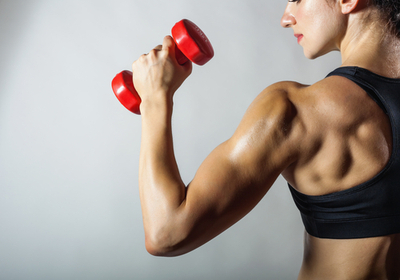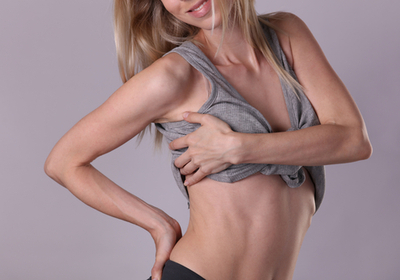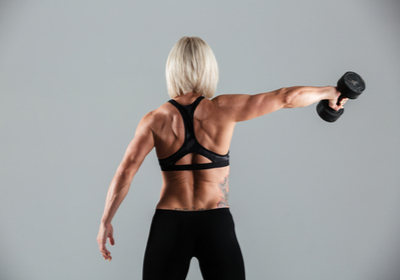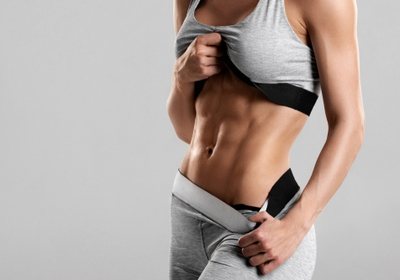VIDEO
Barbell Front Squat
- Core
- Abs
- Triceps
- Upper Back
- Gluteus
- Quads
- Hamstrings
- Chest
Level:Intermediate
Trainer:Brad Cooper
Equipment:Barbell
Barbell Front Squat
- Core
- Abs
- Triceps
- Upper Back
- Gluteus
- Quads
- Hamstrings
- Chest
Level:Intermediate
Trainer:Brad Cooper
Equipment:Barbell
Stand with your feet shoulder-width apart, keeping your hands outside of shoulders with loose fingertip grip. Descend your hips back and down. Squat slowly, making sure that your back straight, elbows high, knees are in line with toes. Complete the exercise at full hip and knee extension.
save to ...
RECOMMENDED FOR YOU
- Core
- Arms
- Legs
Duaration: 00:15
save to playlist
- Core
- Arms
- Back
Duaration: 00:14
save to playlist
- Core
- Arms
- Legs
Duaration: 00:15
save to playlist
- Quads
- Hamstrings
- Hips
Duaration: 00:15
save to playlist
- Abs
- Triceps
- Upper Back
Duaration: 00:15
save to playlist
- Core
- Legs
- Gluteus
Duaration: 00:15
save to playlist
- Core
- Arms
- Legs
Duaration: 00:15
save to playlist
- Core
- Arms
- Back
Duaration: 00:15
save to playlist
- Core
- Arms
- Legs
Duaration: 00:15
save to playlist
- Core
- Arms
- Legs
Duaration: 00:15
save to playlist
- Triceps
- Shoulders
- Gluteus
Duaration: 00:15
save to playlist
- Core
- Legs
- Abs
Duaration: 00:15
save to playlist
- Core
- Back
- Shoulders
Duaration: 00:15
save to playlist
Blog
While working on their arms, many people concentrate on the biceps and completely forget about the workouts for the triceps. Of course, working on your triceps is super important since you have to develop these muscles in order to have strong and relief arms. So how to train your triceps and grow beautiful muscles? This is the question we’ll try to answer in this article.
Is It Difficult to Develop Triceps?
Many people believe that growing triceps is extremely challenging, but luckily, it’s not true. The thing is anatomically triceps are rather easy to train and eventually grow. At the same time, these muscles easily get sore after training and therefore impact your entire arm workout routine since you aren’t able to do certain exercises. In general, working on triceps is not as difficult as many people think, yet it still requires some time and effort.
How Long Does It Take To Grow Triceps?
The amount of time it takes to develop triceps depends on what you are striving for as well as what you start with. For example, if you are skinny and you just want to make your arms more fit, a few months will be enough. In case you want to grow really pronounced muscles, you might need from 6 to 12 months. At the same time, if you have some extra pounds, working on your triceps can take longer since you also have to lose weight. As you can see, every situation is different, so it’s hard to give you the precise amount of time you’ll need to grow your triceps.
How Often Should I Exercise?
To grow any muscle group as well as be healthy and fit, you need to work out at least three times a week. Of course, you need to understand that even if you try to develop triceps, you still have to work on other muscle groups, so all the muscles in your body are harmoniously developed. In general, most trainers recommend doing 4-6 exercises for triceps during your workouts. Each exercise has to be done in 2-3 sets, while the set has to have 10-15 repetitions. In addition to that, you have to keep in mind that you should start with simple workouts and gradually move towards more advanced ones to see the results of your training sessions.
Exercises for Triceps
Of course, many of you are interested in the best workouts for developing triceps muscles. Well, first of all, you can head to our video sessions and rain with our experienced coaches. Secondly, you can check out the following workouts:
Close-grip bench press
Tricep dips
Lying triceps extension
Isolated triceps extension
Cable rope tricep pushdown
JM press
Diamond push-ups
Underhand cable pushdowns
One-arm overhead extension
Dumbbell tricep extensions
Bench dip
Dumbbell floor press
Push-up
One arm kettlebell floor press
45-degree incline dumbbell chest press
Wrapping Up
Gorgeous triceps is a dream come true for any fitness enthusiast and professional athlete, so no wonder why these exercises are so popular. Head to our videos section and explore triceps workouts from our instructors.
Read more
After the abdominal muscles are prepared, the obliques are the next step. The obliques are several groups of abdominal muscles on either side of the main body. The external obliques are at the top and the internal obliques are at the bottom. Training them with functional exercises includes flexion, twisting, and other rotational movements. In order to properly exercise the lateral muscles, however, it is important to remember that most oblique exercises also involve the other abdominal muscles, especially the medial transverse muscles. Therefore, you need to engage certain areas of the abdominal abs in a conscious manner.
Lateral twists
The basic exercise for the abdominal obliques is the lying lateral twist. Begin with lying on your side with your arm bent at the elbow to support your head. Extend the elbow toward the leg slowly, performing a purposeful contraction of the abdominal obliques.
Prone lateral push-ups
This exercise is fine for developing the neuromuscular links between the abs and the brain. Lying on the back, pull your left elbow in a slow tempo towards the opposite knee. Perform 12-15 reps on each side, and try to achieve a special burning feeling.
Lateral push-ups on a fitness ball
The advantage of this exercise is that you achieve a wide range of motion by bending your body slowly and controlling each movement over the ball. As you lift, feel your side abdominals twist and stretch as you descend. Place your arms behind your neck and do not move them apart.
Cross contacts
Make sure that your legs are straightened up while you are lying on your back. Place your hands on the back of your head and lift your head and shoulder blades slightly. Then do a twisting motion, extending your legs with the opposite arm straight. Perform the same movement for the other side. Repeat at least 20 times.
Lift your hips
Make sure you are lying straight on one side. Your feet should be lying on top of each other and your free arm fixed at the waist. You need to lift your torso so that your body line is completely straight at peak amplitude. At the apex, pause briefly to emphasize the work of the obliques. As you lower your torso, your thighs are only gently touching the ground and the muscles are not fully relaxed.
Developed obliques provide the framework for your abs and make them look amazing, so if you really want to have a great abdomen, you should work both your abs and obliques.
Read more
Upper back muscles are extremely important for the right posture, yet many people completely forget about these muscles while working out, which is a big mistake. So why are these muscles so important, and how to train them? These are the questions we will attempt to answer in this article.
What Is Upper Back?
The muscles of the upper back consist of two main parts, which are the trapezius and latissimus muscles. Apart from that, many experts also involve the back bundles of deltas in the upper back muscle group since they are involved in most workouts for the upper back muscles. At the same time, referring to these muscles as a part of the upper back is incorrect from the anatomical point of view.
The main function of the trapezius muscles is to provide the movement of the shoulder blades as well as make it possible to raise arms and lift objects. These muscles are also rather important for our posture as well as the ability to keep our back straight. At the same time, the latissimus muscles are located on both sides of the back. They resemble wings in shape and occupy almost the entire back area. These muscles are needed to pull the arms back as well as bring the shoulders to the body.
Why Do I Need to Develop My Upper Back?
So we have already figured out that the upper back muscles are responsible for the right posture as well as the ability to raise arms and lift objects, but who needs to work on their upper back? Well, a strong upper back is perhaps one of the main goals for everyone. In particular, among the people who need to work on their upper back are:
Office workers who work all day at the desk
Professional dancers and dance enthusiasts who need a strong back and perfect posture
Athletes who actively involve the neck, shoulder, and back muscles while doing their sports activities
Fitness enthusiasts and bodybuilders who strive to grow muscles and harmoniously develop all muscle groups
People who want to have a nice posture
So do you belong to any of these groups? We bet you do. So make sure to add at least a few upper back exercises into your workout routine.
Best Exercises for Upper Back
To wrap up, we would like to provide you with some useful workouts for your upper back, so without any further ado, here they come:
Reverse fly
Bent over barbell row
Barbell high rows
Single-arm dead stop row
T-pulls
TRX row
Upright row
Single-arm landmine row
Y-pulls
Face pull
Seated row
Hang clean
Renegade row
These simple exercises will help you develop your upper back muscles quickly and stress-free, so make sure to give them a try.
Wrapping Up
Developed upper back muscles are essential for the right posture as well as for avoiding injuries while doing other sports activities. So no matter if you are a professional athlete or not, you still need to work on these muscles.
Read more
Gorgeous abs are perhaps the biggest dream of all fitness enthusiasts as well as professionals. However, not many people know how to get abs and pretty often make a lot of mistakes while trying to work on their abs. Therefore, in this article, we will talk about abs and how to get them quickly and stress-free
Your Abs Are What You Eat
Not many people know it, but your diet is extremely important for achieving relief abs. Of course, it doesn’t mean that you have to starve yourself or follow weird diets, but working out is definitely not enough to achieve such a goal. The thing is to build muscles you need protein, which means that you have to include more protein into your diet. At the same time, high qualities of sugar and Natrium (salt) provoke swelling that sort of hides the relief of the muscles even if you don’t have much belly fat. Thus, to get the six-pack, you have to make your diet healthier as well as drink enough water, and together with exercising, it will help you get the body of your dreams.
Don’t Overestimate Your Abilities
Many people think that the more they exercise and the less they eat - the better. Obviously, it’s not true. You have to adequately evaluate your abilities and consider those while working out and dieting. Trust us, starving yourself and exercising for 3 hours every day won’t bring better results. It will only damage your health, both physical and mental. So don’t worry if you cannot see the results after a few weeks of training and healthy dieting, just keep going and you’ll surely reach your goal.
Core and Back Muscles Are Essential
Probably 90% of people who would like to get abs usually forget about the core muscles and work only on their abs. This is a huge mistake. As a matter of fact, to have relief abs, you have to work on your core muscles simply because these muscles are close to each other, moreover, abs are a part of the core, so it’s impossible to get relief abs without working on the core. Therefore, working on your core will significantly boost the entire process. In addition to that, you shouldn’t forget about the back muscles. You see, our posture heavily influences the way our belly looks. You have probably already seen skinny people with weird and unproportioned bellies. Well, that happens because they have weak back muscles and their spine is curved in the way that makes their bellies sort of come forward. So in order to avoid that, make sure to strengthen your back muscles too.
Best Workouts for Abs
To wrap up, we would like to list some of the best workouts for abs, core, and back. So here they come:
Plank
Diagonal twists
Deadlift
Pushups
Bent-over row
Plank push-ups
Pull-up
Crunches
TRX suspension row
Leg lifts from lying position
Lat pulldown
Final Thoughts
A stunning six-pack is the biggest dream of many fitness enthusiasts and, luckily, it’s totally possible to make it come true. So consider the things we talked about in this article and start moving toward your goal now.
Read more
The Kardashians have created many beauty trends, one of which is having beautiful buttocks. So, in this article, we'll talk about building great gluteus muscles so you can look as attractive as Kim, Kourtney, and Khloe. Let's begin by looking at the anatomy. The glutes are made up of three main parts.
The gluteal maximum muscles, which are the largest muscles in the body, help to maintain balance when walking and running. They allow your legs to move sideways and are also responsible for contouring the shape of the buttocks.
The gluteus medius is overlaid in part by the gluteus maximus and is located at the top of the pelvis. It is involved in leg extension, lateral flexion, and body stabilization during the movement.
Finally, below is the gluteus minimus. Both are in charge of leg induction and body stabilization, as well as shaping the thigh line.
Training for the glutes
Building your glute muscles isn't easy, particularly when you're on a tight schedule. However, by working out at least three times a week and never giving up, you will quickly reach your goal. To help you achieve your goals, we've compiled the best exercises for your gluteus muscle development.
Deep squat with a barbell
This is one of the basic exercises that help to develop this muscle effectively. From the starting position - with your feet apart - lower your pelvis below the knees. Keep your lower back straight and make sure the knees do not go over your feet. Spreading your legs wider apart puts more pressure on your hips.
Romanian deadlifts
Stand up straight with a slight bend at the waist. Holding the dumbbells in both hands, bend over and pull your pelvis backward. Reaching a point just below your knees, return to start.
Dumbbell split squat
Exercise with a straight back and one leg stepping forward while the other leg is thrown into a brace behind you. Squat down and perform the exercise with both legs.
Back lunges
From the standing position, take a large step backward and drop down to form a bent-over position. Return to start and repeat this exercise for the other leg. Make sure your knee is bent at a right angle and not sticking out past your toes, do 20-30 reps. It is important to step backward precisely, maintaining rhythm and balance.
Having great gluteus is everyone's dream, and luckily, developing these muscles isn't difficult if you know the right exercises. So why not take advantage of our tips and start working towards your goal right now?
Read more
SAVE TO ...





